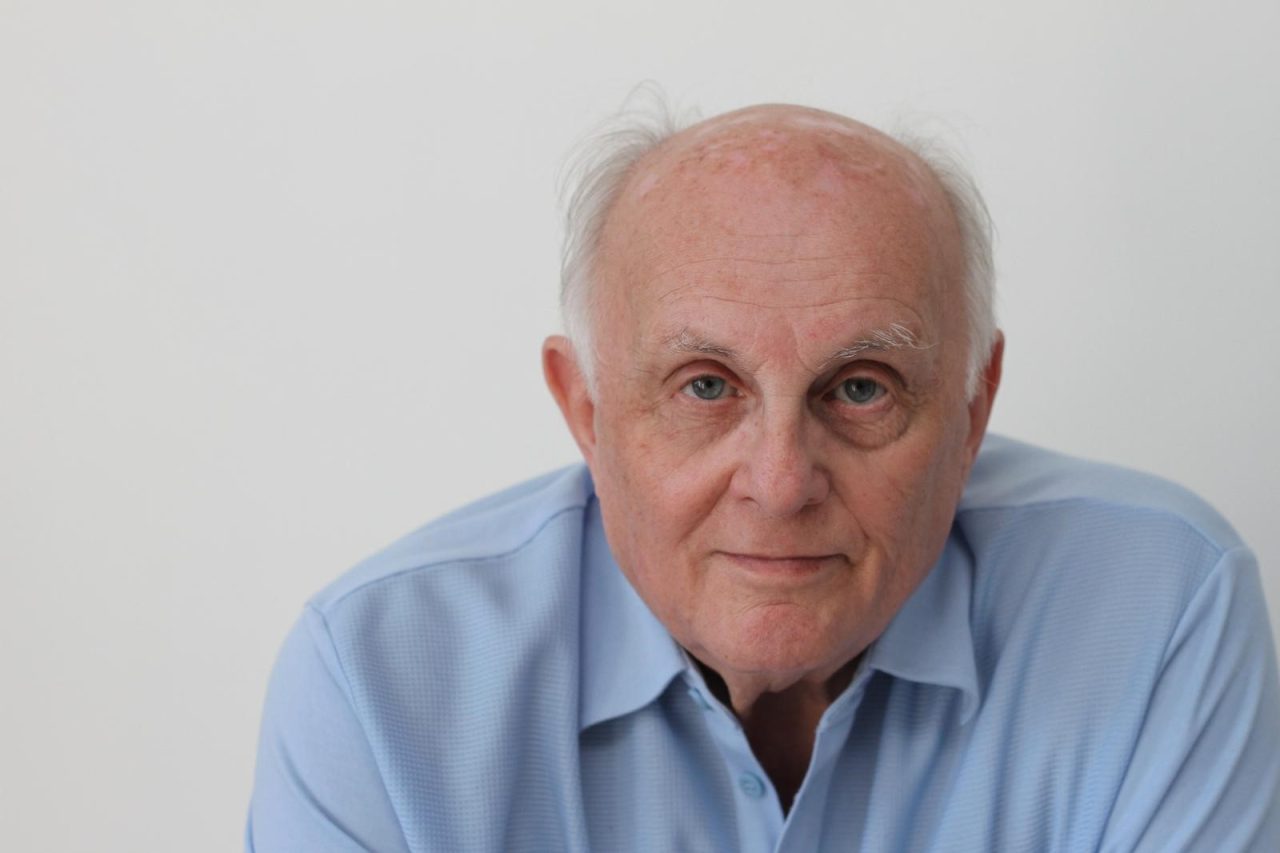
Alfred Garwood
Alfred Garwood was born in a Nazi ghetto, imprisoned in Bergen-Belsen Concentration Camp, and later put on a train destined for Terezin Concentration Camp, when he and his family were liberated by the Red Army. Alfred spent the rest of his childhood in Britain and grew up in the centre of a community of Holocaust survivors. He has since written extensively on the psychological implications of trauma relating to genocide whilst also working as a General Practitioner.
When we went back to Poland, we found only two members of my parents’ family had survived out of 60 people.
In October 1942 Alfred Garwood was born in the Przemysl Ghetto in Poland, to Solle and Mania Garfinkle. The ghetto had been sealed for around three months, and deportations to concentration and death camps had begun. Alfred’s father had been born in London in 1917. As a result, when Alfred was eight months old his family were sent to the Gestapo headquarters in Krakow to prove their nationality. Jews who had Allied or Neutral nationalities were deemed to be useful by the Nazis, so Alfred and his family were given a certain amount of protection due to this status.
In July 1943 the family were sent to Bergen-Belsen, a concentration camp in Germany, where they were housed with other ‘exchange Jews’ and held as hostages. They had potential value for the Nazis, as they could be exchanged for German prisoners held by the Western Allies. Alfred describes the camp as ‘hell-on-earth’. The population of Bergen-Belsen grew rapidly towards the end of the war as prisoners were being moved westwards and as a result, disease and starvation were widespread.
Just one week before the camp was liberated by the British Army in April 1945, Alfred and his family were ordered to board a train which was travelling to Terezin Concentration Camp. Now called ‘The Lost Train’ by historians, during the journey it was stopped by Soviet soldiers who began shooting at the carriages. Thanks to Alfred’s father’s ability to speak Russian, the soldiers were made aware that the train was full of Jewish prisoners, and they were liberated.
When the Garwood family returned to Poland, they found out the devastating news that only two of their extended family members had survived the war. After being attacked by Polish fascists during the spike in antisemitism (anti-Jewish hatred) after the war, Alfred’s parents decided to relocate to London.
They were the only, or one of the only, whole nuclear Jewish families to survive the Holocaust and arrive in London’s East End. And so, the family were always being visited by survivors. This meant that Alfred grew up listening to survivor testimonies and was brought up by a community of traumatised Holocaust survivors.
Alfred’s remaining childhood in the UK was difficult. He had rickets due to the starvation he had endured in Poland and Germany and was much smaller than the other children, for which he was bullied. Simultaneously, Alfred was being treated as a miracle for having survived the Holocaust by the adults around him, which put a lot of pressure on him as he decided how to spend his life.
As a teenager, Alfred overcame the rickets and joined Jewish youth clubs, which helped him to begin to overcome his childhood experiences. He decided to become a doctor and after years of studying, whilst also looking after the family hair salon due to his father’s ill health, he got a place in medical school. In this time, he also married his wife and had children.
In Alfred’s final year of medical school his wife developed MS, which impacted on his ability to pass his final exams. But after retaking these exams, the dean of the school helped him to get a job as a GP in London. This route of employment was extremely rewarding for Alfred, who felt fulfilled being a healer for others.
When their children were only around 10 and 11 years old his wife’s MS symptoms worsened, and she passed away three years later. This was an isolating experience for Alfred, who felt that the life he had built was slipping away. It was then that he decided to throw himself into his work around childhood trauma. During this time, Alfred founded many groups and charities, including the ‘Child Survivors Group of Great Britain’ where he supported many child survivors of the Holocaust using psychotherapy. In this time, he also re-married and had more children.

Alfred’s book Holocaust Trauma and Psychic Deformation: Psychoanalytic Reflections of a Holocaust Survivor
Alfred became a qualified Psychiatrist, and he was an honorary consultant and group analyst when he retired. In his work with child survivors, Alfred found that the books on trauma were inadequate for supporting the individuals he knew. He combined his knowledge with information from other fields and perspectives to create a new support and treatment system. His first book took six years to write and it revolutionised the field, introducing a new way of considering trauma. Alfred now helps victims of trauma from all areas and says that healing individuals who many thought were unable to be healed is ‘a profound blessing’.


